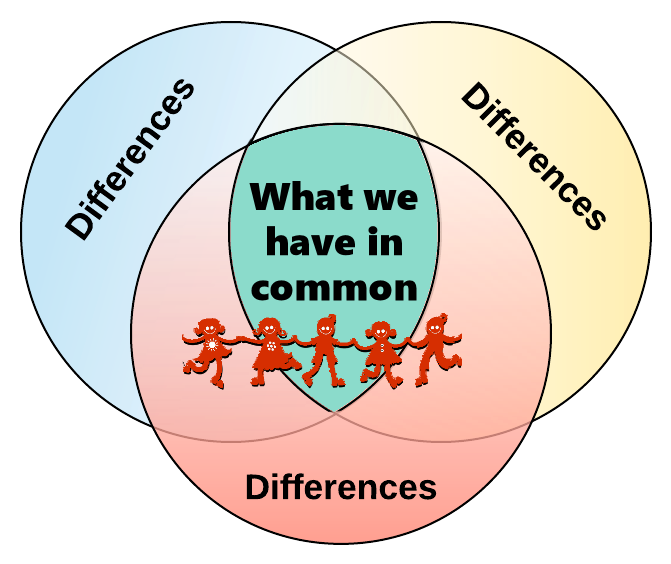Current e-Journal
- What can move you from the helpless feeling of "I'm just one person" to taking meaningful action in troubling times? - June 27, 2018

July 30, 2018

The things we have in common are the things that will save us.
The Things We Have in Common
These days the world feels more divisive than ever. We think this is about politics, but it is actually deeply engrained in our everyday lives.
- In marketing, we are taught to see others as “the competition,” and to differentiate ourselves from them.
- In day-to-day life, gossip makes us feel superior to those “other people” about whom we are telling tales.
- In workplaces and neighborhoods, we have all sorts of reasons for mistrusting and disliking not just individuals, but often whole families or teams.
Yes, we are all different from each other.
But we are also very much the same as each other.
We all feel pain.
We all feel the need to belong, to be loved, to be accepted for who we are.
The more we can identify what we have in common, the more we are able to accomplish – together.
When President Clinton’s domestic policy advisor, Carol Rasco, was asked how she got so many programs passed within a politically divisive environment, she replied, “At every turn, I saw my job as finding what we could all agree upon.” Listen to the full interview here.
If we are going to bring out the best in any situation, that is where it all starts.
Try this:
As you think about people with whom you disagree – perhaps even people you feel you hate – ask yourself…
What do you have in common with that person?
Do it right now. Think of someone you vehemently disagree with. It could be an argument with your spouse, or an elected official taking a stand on an issue.
It’s easy to find the stuff you do NOT have in common. But dig deeper.
What do you have in common with that person?
- Do they love their family?
- Do they fear for their family’s safety?
- Have they felt the pain of losing someone they love?
- Do they want their children to grow up strong and healthy?
Identifying ourselves solely by our differences has led to the mess we see around us in the world. And as Carol Rasco noted in the interview here, the only way to move toward our potential is to ask the opposite question.
What DO we have in common?
Seek that. And if you don’t immediately find it, look harder. It’s there. You just need to train yourself to listen for it.
That is why Catalytic Listening is the first step – and the ongoing step – in the Catalytic Thinking framework.
NOTE: There is one seat left in our upcoming Catalytic Listening Online Immersion Course. Information about that course is here. If you’re curious about this course – or any of our courses - just hit reply to this eJournal and let’s have a conversation!
Want to learn alongside other people who are also trying out Catalytic Thinking practices? Join our Catalytic Thinking in Action community on Facebook - a welcoming place where you can ask questions and learn from people like you who are experimenting with these practices. We look forward to seeing you there!
eJournal Archives:
If you’re new to our eJournal, or just want to remind yourself of past practice exercises we’ve shared, check out our eJournal archives here.
Keeping Our Programs Freely Available
Most of the programs at Creating the Future are free or low cost, with liberal tuition assistance when they aren’t.
If you find our programs of benefit, we hope you will consider contributing, to help keep these programs available to as many people as possible. Donate here ...
SUBSCRIBE
to get this e-Journal
Creating the Future is a 501(c)(3) tax exempt organization in the U.S.A
